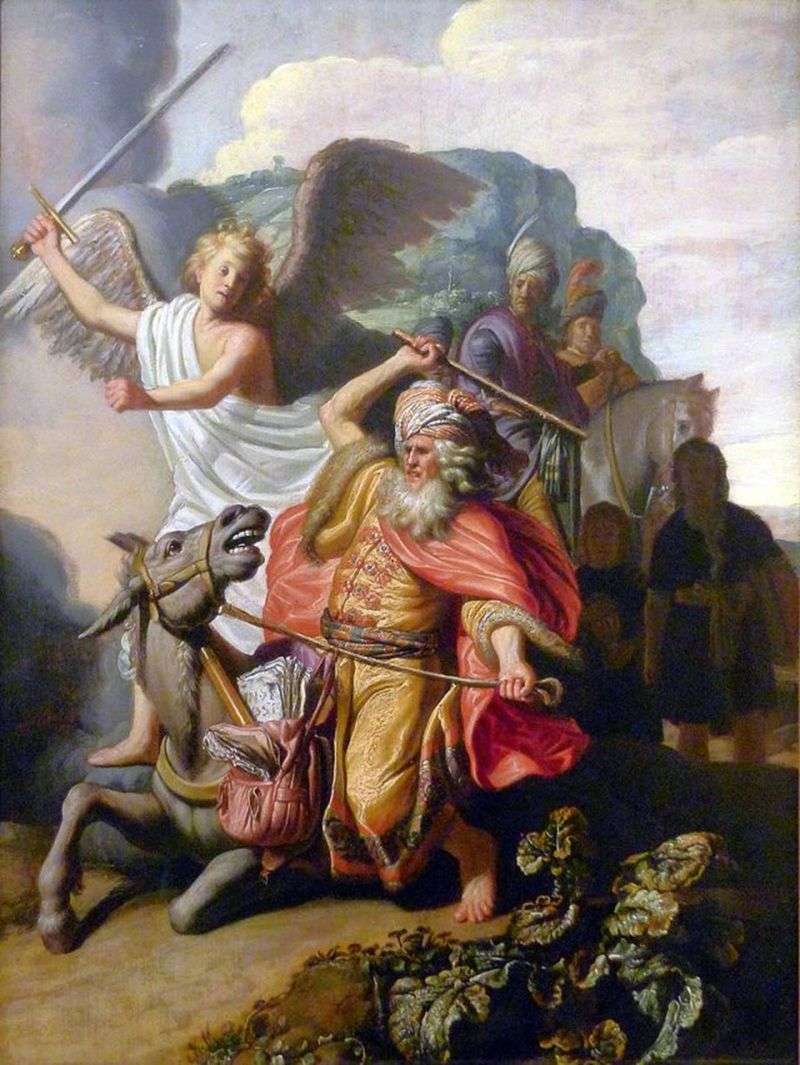
The painting “Balaam Ass” was created in 1626 and refers to the so-called Leiden period, the time when Rembrandt van Rijn worked in this city from 1625-1631. All the works of this time are characterized by the search for creative independence, however, they still have the influence of Peter Lastman.
Rembrandt chose him as a teacher, because the latter had experience in Italy, became famous as an artist who painted art scenes, gained fame in Amsterdam, and had an extensive circle of customers. The painting “Balaam ass” was the idea of Lastman and the outline of the plot, too, his work. It was he, as in his work of the same name – placed the figures in the center. Rembrandt only repeated all the gestures: Balaam, raising his staff, angel, tremendous with his sword. However, I wrote it from myself with greater impetus: the angel flies, the donkey is more scared. The work was continued and completed in his own workshop in Leiden, where he moved from Amsterdam, without being able to put up with the constant edits of his work by Lastman.
The plots that touched on the themes of the Old Testament were very popular with artists from the Netherlands. The story of the “Vallamov donkey” dates back to a biblical parable about the famous warlock, soothsayer and magician from the city of Pefort, on the Euphrates River. The ancient Israelites, under the leadership of Moses, after the exodus from Egypt took possession of the lands beyond Jordan. After that, they gather armed forces to seize the land of Canaan, which God promised them. The king of Moab, a neighboring country to Canaan, not having enough strength to repel aggression, asks a certain Balaam to cast a curse on his enemies.
The divinator, after much persuasion, agrees and sets off on a donkey. Subsequently, the road is blocked by an angel visible only to the animal, which God sent. Balaam began to beat the donkey, after which she spoke and conveyed to him the will of God. Despite the numerous requests of King Moab, the soothsayer Balaam not only did not curse the people of Israel, but blessed them three times.
The work was created on canvas and made with oil paints. Artistic style – baroque. Technique of performance – easel painting. The vertical format of the picture visually groups the characters in the center of the composition. The size of the wooden frame is 65 cm × 47 cm. The donkey is depicted in exactly the same position as in Peter Peter Lastman’s picture of the same name. However, Rembrandt van Rijn added more dynamism to his creation, which reflects: a wider open mouth, which underlines the transition from the donkey’s cry to human speech, the leg is bent more strongly, the ears are more drawn back, which in the amount conveys pain, fear and surprise.
The most significant detail of the picture are the eyes of Balaam. Unlike the picture of Lastman, where they are so astonished that the eyeballs are completely visible, the picture of Rembrandt shows them empty, blind, unable to see an angel and “divine truth.”
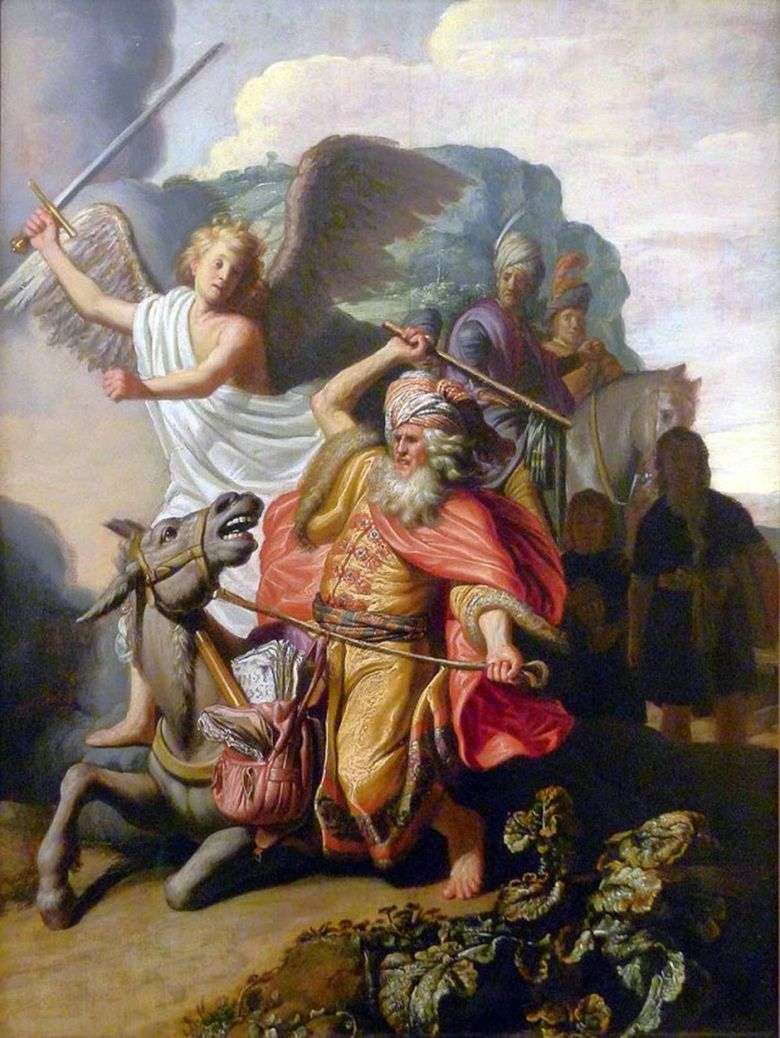 Culo Balaam – Rembrandt Harmens Van Rhine
Culo Balaam – Rembrandt Harmens Van Rhine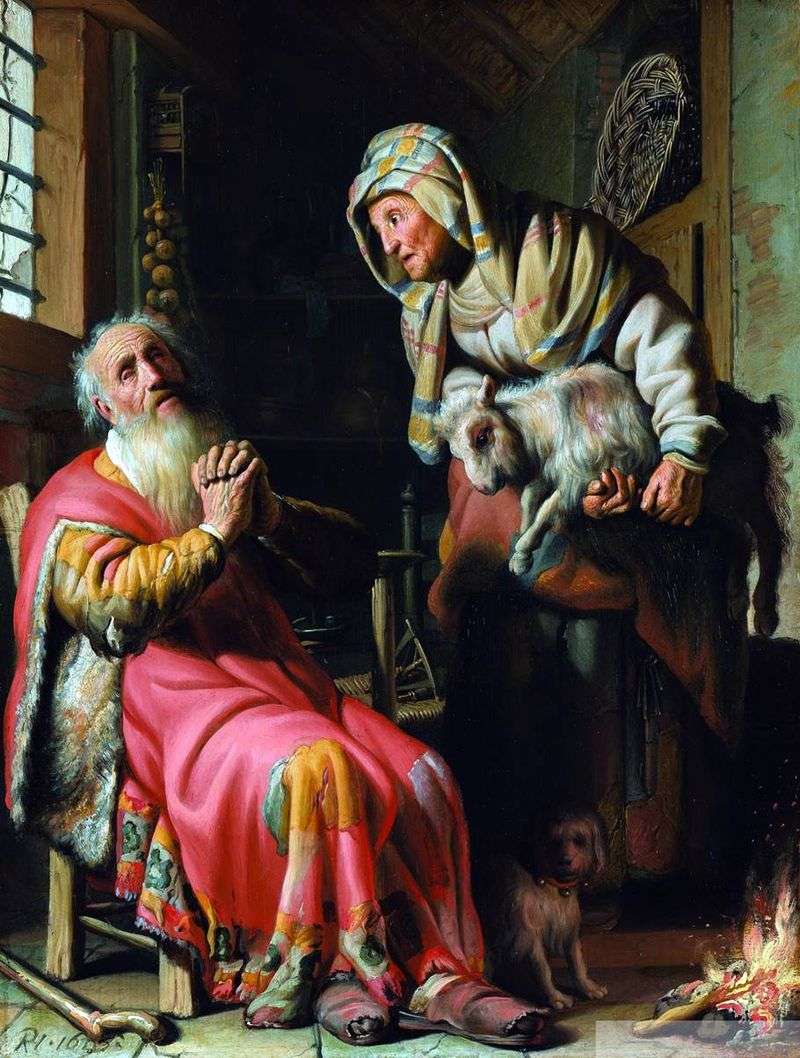 Tovit suspecting his wife of stealing by Rembrandt Harmens Van Rhine
Tovit suspecting his wife of stealing by Rembrandt Harmens Van Rhine Saskia van Eilenburg by Rembrandt Harmens Van Rhine
Saskia van Eilenburg by Rembrandt Harmens Van Rhine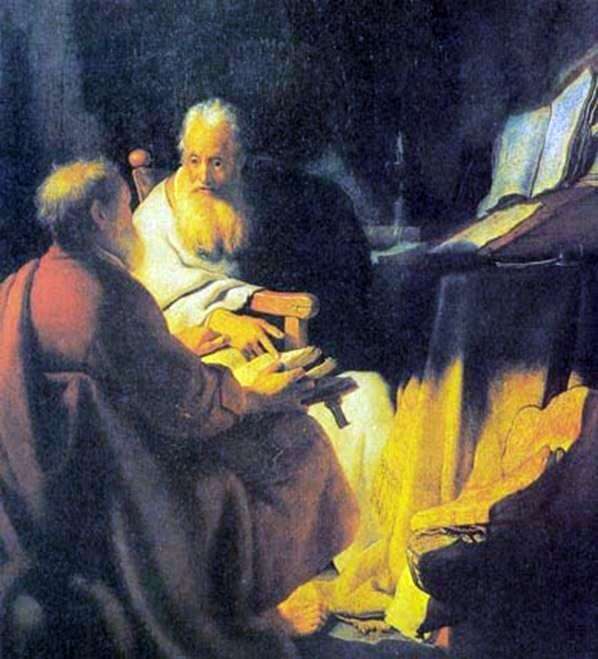 Scholarly Dispute by Rembrandt Harmens Van Rhine
Scholarly Dispute by Rembrandt Harmens Van Rhine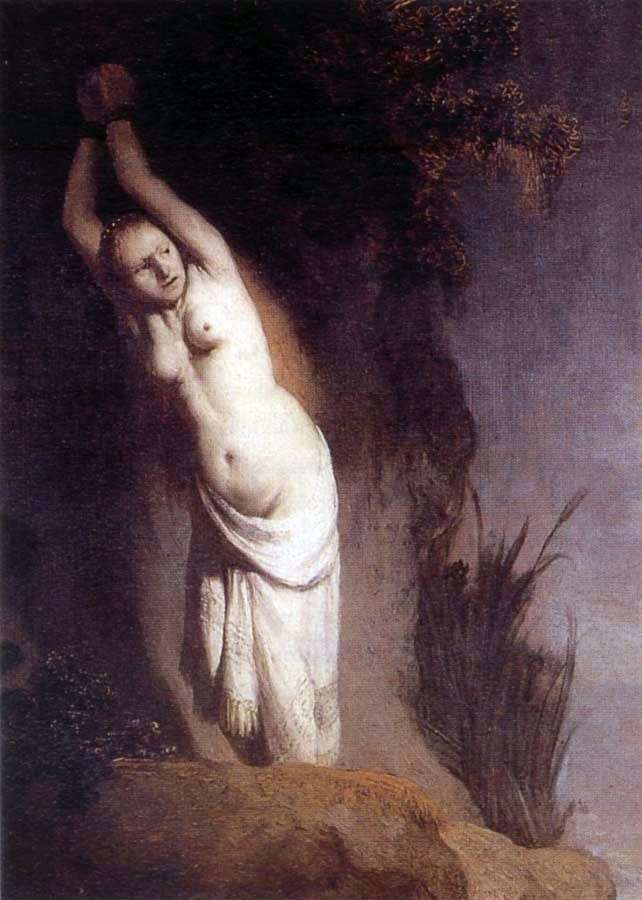 Andromeda by Rembrandt Harmens Van Rhine
Andromeda by Rembrandt Harmens Van Rhine Hendrickje by the window by Rembrandt Harmens Van Rhine
Hendrickje by the window by Rembrandt Harmens Van Rhine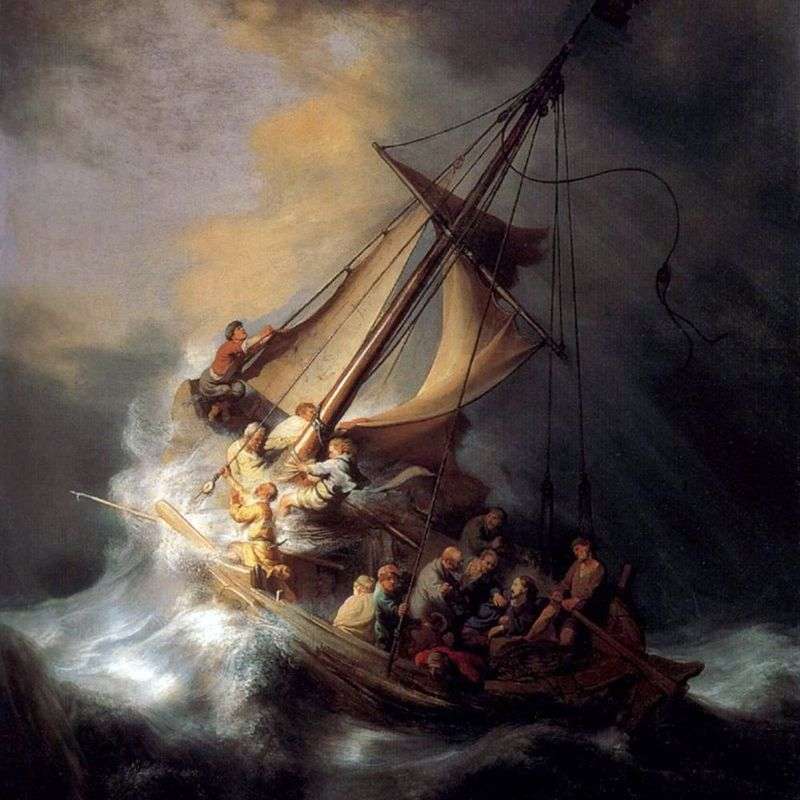 Shuttle of Christ in a Storm by Rembrandt Harmens Van Rhine
Shuttle of Christ in a Storm by Rembrandt Harmens Van Rhine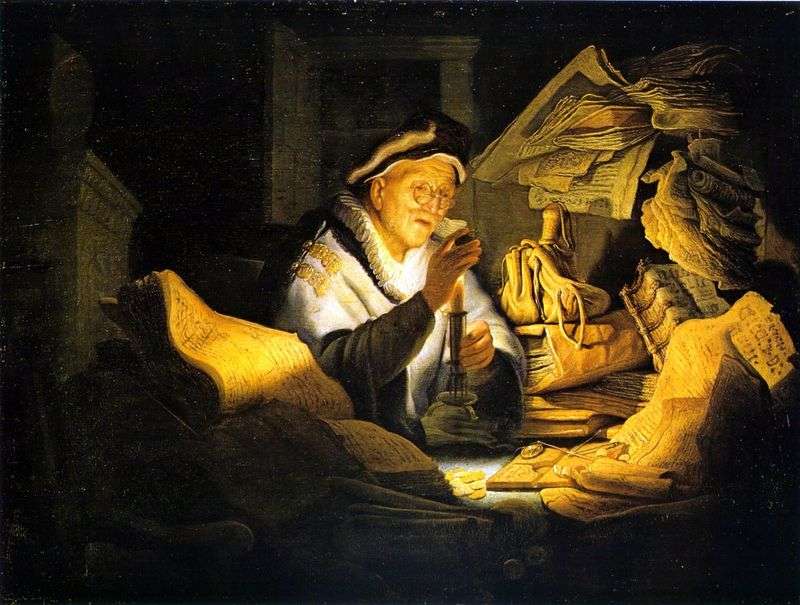 The Parable of the Rich Man by Rembrandt Harmens Van Rhine
The Parable of the Rich Man by Rembrandt Harmens Van Rhine